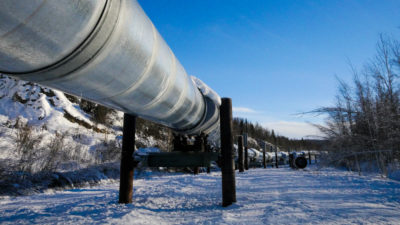Being a junior oil and gas company is a very capital intensive business. Traditionally, these companies make their money by investing in profitable growth opportunities and growing their production base, which brings about increased economies of scale, lower operating costs, greater diversification of assets, lower cost of capital, and greater investor interest.
We are now seeing more and more junior oil and gas stocks who are attempting to grab investors’ attention by offering very attractive, yet potentially unsustainable dividend yields.
Case in point
Twin Butte Energy (TSX: TBE), with a dividend yield of 11.5%, is one such company. Though that yield jumps off the page, recent developments at the company indicate it may not be sustainable.
Juniors are, by their nature, higher risk. For one, they have a smaller number of producing wells and assets so their production is less diversified and they have a greater vulnerability to hiccups. They have lower economies of scale so typically costs are higher, and lastly, the cost of much needed capital is higher. All things that are not conducive to paying out dividends.
With these considerations in mine, let’s take look at Twin Butte’s recent past. The company announced that production for the second quarter of 2013 will fall short of expectations (about 3% lower than expected), due to extremely wet weather and prolonged spring break up, as well as problems with the reservoir at the Primate Property, which has been experiencing increased water inflow.
This production shortfall will negatively impact cash flow, and management has reacted by adjusting their capital expenditures (capex) down by $15 million to $70 million for the year 2013. Even with this reduction, the all-in payout ratio (as defined by (Dividends + capex)/operating cash flow), will be kept at slightly above 100%. Not ideal. The reason that investors should look at the all-in payout ratio is due to the fact that capex is a necessary investment that these oil and gas companies must make in order for their business to be sustainable on a longer term basis. Accordingly, it must be treated as a necessary cash outflow.
Time to Pay the Piper
With cash flow lower than expected, management was faced with 3 options: the company could either reduce capex, reduce the dividend, or increase debt. Reducing the dividend would be suicide for the company, as this always sends a stock tumbling. Increasing debt is not really viable either. Based on the company’s projections for 2013, the Debt to Cash Flow ratio as at the end of the year will be 1.68 times, already too high. Besides, it does not make good economic sense to borrow to pay dividends. That left reducing capex, but how long until this reduction in capex results in even lower production and cash flow and the company is once again faced with the same decision: reduce capital expenditures, cut the dividend, or increase debt. We can easily see how this could become a vicious cycle.
Other Options for Yield
As an alternative to company’s like Twin Butte, one can look to the larger, more established oil and gas companies that are paying out attractive dividends. While the dividend yield is comparatively lower, what you get in return is lower risk, greater preservation of capital and greater peace of mind, which is priceless.
One name that stands out is Bonterra Energy (TSX: BNE), with a market capitalization of $1.6 billion and a dividend yield of 6.7%. Looking deeper however, we can see that the payout ratio has been unsustainably high for the last few years, i.e. 145% in 2012, and the company’s debt to cash flow ratio is creeping up.
Another name that investors may consider is Baytex Energy (TSX: BTE), a heavy oil company with oil making up 87% of production and 93% of reserves. Baytex Energy has a dividend yield of 6.3% and a market capitalization of $5.2 billion. With its size comes production diversification, and a significant inventory of low cost crude oil projects. Baytex is very profitable, with an operating margin of 34.3% in the last quarter. Baytex has very attractive finding, development and acquisition costs (FD&A costs) of $11.61 per boe and an industry leading recycle ratio, which measures profitability, of 2.7x. Although the payout ratio was 136% in 2012, the company’s balance sheet is healthy, with low debt levels. This company has many attributes that point to sustainability of dividends.
One more that has some appealing attributes is Crescent Point Energy (TSX: CPG), Canada’s largest producer in the Bakken region that has an attractive yield of 7%. Although we are again faced with another company whose payout ratio is above 100%, in fact, it was 120% in 2012, Crescent Point has been very successful in using horizontal drilling techniques in order to maximize the productivity of its asset base and has a strong history of production increases as well as low cost production. In fact, in the latest quarter production increased 21% from the same period last year, to 117,700 boe per day. Lastly, the company’s debt level is reasonable, with a debt to cash flow ratio of 0.44 times.
Bottom Line
It remains to be seen if these high dividend paying junior oil and gas companies will prove to be a viable business model. Using capital that is very much needed for the growth and sustainability of a junior oil and gas company to pay out dividends seems to be a high risk, short term strategy. Investors may be better served to give up a little yield in favour of a more flexible capital management program.
Canada’s energy patch is a proven place to find yield in our market. If you’re looking to diversify your income stream however, click here now and download our special FREE report “13 High-Yielding Stocks to Buy Today”. This report will have you rolling in dividend cheques from a variety of sources in no time!
The Motley Fool’s purpose is to help the world invest, better. Click here now for your free subscription to Take Stock, The Motley Fool Canada’s free investing newsletter. Packed with stock ideas and investing advice, it is essential reading for anyone looking to build and grow their wealth in the years ahead.
Follow us on Twitter and Facebook for the latest in Foolish investing.
Fool contributor Karen Thomas does not own shares in any companies mentioned at this time. The Motley Fool does not own shares in any companies mentioned at this time.







